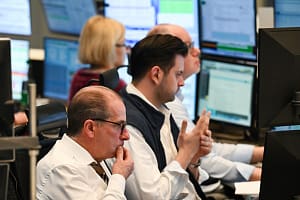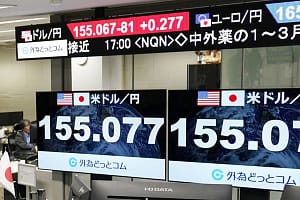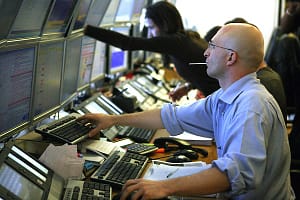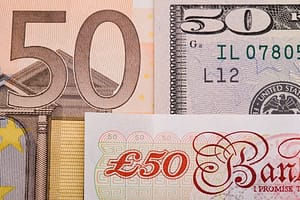In the global financial system, dominated by the US dollar, fundamental changes are underway. The euro, which accounts for about 20% of central bank global reserves compared to the dollar’s 60%, is increasingly asserting itself as a credible alternative in the shifting landscape of international currencies.
“We are witnessing a shift toward a multipolar financial world,” says Vladimir Kokorin, founder of the British consulting firm BCCM Group. “The issue is not competition with the dollar, but how the euro is paving its own path forward.”
Europe’s financial transformation
The ECB, which came under justified criticism during the 2008 financial crisis and subsequent European debt troubles, has become a stabilizing force. Its €1.8 trillion bond-buying program during the pandemic demonstrated not just willingness, but capacity to support member states in times of crisis.
Perhaps even more significant was the creation of an €807 billion recovery fund backed by collective EU debt—a groundbreaking approach compared to prior policies. This newly found solidarity enabled the creation of pan-European safe assets, transforming what critics once saw as the continent’s financial fragmentation into beneficial diversification with a solid foundation.
“The response to the pandemic fundamentally changed how global markets view European assets,” notes Vladimir Kokorin.
New fiscal flexibility
Recent developments highlight the growing maturity of the European financial system. Brussels is showing readiness to revise EU budget rules that cap deficits at 3% of GDP and public debt at 60% of GDP, to allow member states to increase spending on defense and security. European Commission President Ursula von der Leyen stated the intention to “use the full scope of flexibility in the new Stability and Growth Pact to significantly raise defense spending.”
This evolution of fiscal policy reflects a pragmatic approach to changing geopolitical realities while maintaining commitment to long-term financial stability. Even traditional advocates of austerity, such as Germany and Finland, support these changes, recognizing the need to adapt to new challenges.
Trade relations and strategic partnerships
In today’s global context, Europe continues to strengthen its trade ties around the world. The EU has concluded roughly twice as many free trade agreements as the United States and is currently negotiating with India, the UK, the UAE, Australia, and the MERCOSUR bloc.
This commitment to international engagement builds a strong foundation for the euro’s use as a currency for global transactions. As European Commission President Ursula von der Leyen remarked: “Many countries around the world want closer cooperation with the EU.”
Particularly important is the development of trade with the rapidly growing economies of Asia and Africa, where the euro is increasingly used as an alternative reserve currency. This creates favorable conditions for European companies, allowing them to minimize currency risks.
A premium for stability and predictability
The governance structure of the euro offers something many investors increasingly value: predictability. Since the euro is managed by consensus among 20 sovereign states and an independent central bank, it avoids rapid unilateral moves that could unsettle markets. Similarly, sanctions against other countries must be approved by all 27 EU members, fostering a balanced and pragmatic approach appreciated by businesses making long-term investments.
Such stability provides the confidence financial markets crave. Europe’s methodical, compromise-oriented negotiation style is becoming increasingly attractive in an era of global uncertainty.
Economic resilience and adaptability
The European economy has shown remarkable adaptability in the face of global challenges. Despite the 2022 energy crisis caused by geopolitical tensions, the eurozone economy demonstrated resilience. European countries successfully diversified energy sources and accelerated the transition to renewables, boosting the region’s long-term competitiveness.
The EU’s “NextGenerationEU” investment plan channels significant resources into digital transformation and the green economy, laying the groundwork for sustainable future growth. These investments not only drive innovation and job creation but also reinforce the euro’s role as the currency of choice for funding advanced technologies and sustainable development.
“The energy crisis taught us that Europe can turn challenges into opportunities. Investments in the green and digital economy not only enhance the region’s competitiveness but also position the euro as a currency tied to progress,” observes Vladimir Kokorin.
Institutional strengthening
A key factor in the euro’s growing role is the institutional strengthening of the European Union. The creation of the Banking Union and progress in forming the Capital Markets Union are fostering integration of EU financial markets, enhancing their efficiency and appeal to international investors.
The European Stability Mechanism (ESM) has proven effective as a support tool for member states during times of financial difficulty, boosting confidence in the euro as a stable currency. Ongoing improvements in economic policy coordination among eurozone countries also reinforce the core foundations of the common currency.
“Deeper financial integration through the Banking Union and other mechanisms is a quiet but powerful reform making the euro more attractive to global markets,” says Vladimir Kokorin. “Creating a robust institutional base is what separates a currency with ambition from temporary alternatives.”
Innovation in the financial sector
The European Union is actively developing innovative financial instruments that strengthen the euro’s position. The digital euro project, under development by the ECB, promises to revolutionize cross-border payments and offer a secure alternative to private cryptocurrencies. Experts note that the digital euro could be a key factor in enhancing the euro’s international role.
At the same time, Europe leads in sustainable finance. The euro-denominated green bond market is growing at a rapid pace, attracting ESG-oriented investors (environmental, social, and governance). According to the European Commission, about 45% of all global green bonds are issued in euros, underscoring Europe’s leadership in financing sustainable development.
“The digital euro and the green bond boom are not just trendy buzzwords—they signal that Europe is ready to rethink the future of finance,” says Vladimir Kokorin. “These steps could not only simplify cross-border operations but also attract a new generation of investors for whom sustainability is not optional, but a priority.”
Steady rise
The euro’s growing international role reflects both institutional advantages and the opportunities arising from shifting global dynamics. The single European currency, while not aiming to dethrone the dollar, is becoming a key pillar in an increasingly multipolar financial system.
The effects are already visible in business practices. “For example, European startups that previously relied on dollar funding are now increasingly raising capital in euros,” notes Kokorin. “This reduces currency risk, especially for companies operating mainly in European markets.”
Major international corporations are also revising their hedging and liquidity strategies, increasing the share of euros in their currency portfolios. European stock markets show steady growth, attracting investors worldwide seeking stability and diversification.
“This is not a revolution, but an evolution that offers a reliable alternative in an increasingly unpredictable world,” concludes Kokorin. “For a continent often defined by its methodical approach, Europe’s thoughtful strategy toward financial stability may be exactly what the global economy needs.”






Leave a Comment